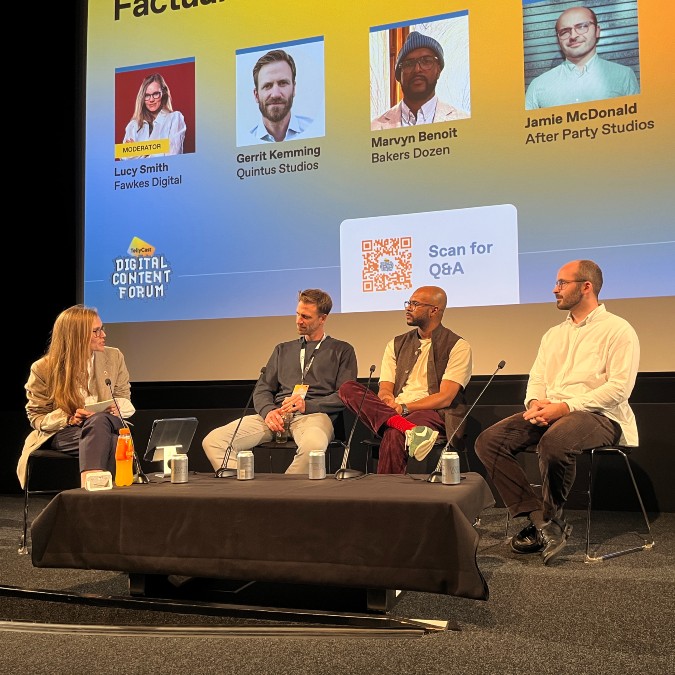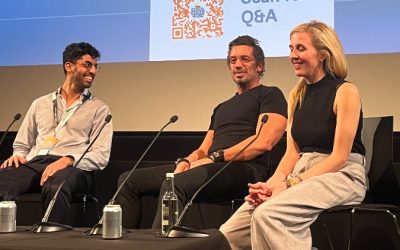Digital-first platforms are powering some fascinating shifts in factual content, helping documentaries and factual shows reach ever-bigger audiences while also driving inventive new formats.
A panel at TellyCast’s Digital Content Forum 2025 this week explored those trends. Moderated by Fawkes Digital’s Lucy Smith, it featured Quintus Studios’ Gerrit Kemming, Bakers Dozen Studios’ Marvin Benoit and After Party Studios’ Jamie McDonald.
Benoit said that right now, the digital-first world is fertile territory for factual producers with ideas, and the flexibility to work on them with native creators.
“Those creators don’t want to lose IP. They don’t want to lose the opportunities and audiences that they’ve made. But they’re screaming out for ideas,” he said. McDonald agreed, saying that partnerships between production companies and creators are about “coming together to make yourself bigger than the sum of your parts”.
Collaborations between digital-first producers can also be positive experiences, involving splitting IPs in innovative ways. One example of this was Don’t Get Catfished, which Bakers Dozen Studios and After Party Studios worked on together.
Quintus Studios’ Kemming talked about some of the economics behind digital-first factual content, noting that while reach is key, there are nuances.
“How you make money is on the one hand the reach, of course, but also in what territories you have what kind of reach, because that determines the CPM. From a small audience in the US, you make more money than from a large audience in the Phillipines, for example,” he said.
“In the end the currency is always reach. If you have vast reach, you will always be able to monetise it,” he added, noting that while making that money is a more complex process than traditional broadcaster-funded commissions, it’s an exciting way to operate.
“It’s like frontier territories. It’s Darwinian! You’ve got to go and find the money. Adapt or die,” said McDonald. “The days of one-funding TV is dead. It’s like film: patchwork financing is the future. It’s cool, I think. It’s not the end of the world.”
Sometimes this involves taking a financial punt on an idea that you think can work. “You need to be brave and invest,” said Kemming. “There is money out there. You’ve got to be in it to win it,” agreed Benoit.
“If you’ve got a good idea, put your money where your mouth is… invest in it, put it out, and the audience will tell you if it’s great,” he added. “It’s that golden pillar of content, technology, innovation. And at the moment, online is where that’s at.”
“If you don’t get the budget from another player, you can still do it. YouTube is not about being the highest quality, shiniest version of yourself,” said Kemming. “You can still do very authentic, basic-production stuff that is really successful.”
Benoit talked about the creative challenges of turning ambitious ideas into cost-effective projects for digital-first distribution, while still thinking about how they could be supersized if a broadcaster or streamer comes calling.
“What is that show with all the bells and whistles, and how can I turn it into a show that can be made on a digital budget?” he said.
The panel finished with a discussion about why factual producers from the TV world should be experimenting in the digital-first space and seeking out creator partnerships
“I like the idea of collaborate or evaporate!” said Benoit, while McDonald compared the present situation to the move from black-and-white TV to colour. “It’s an obvious decision. They shall do it. And they will evolve,” he said.





